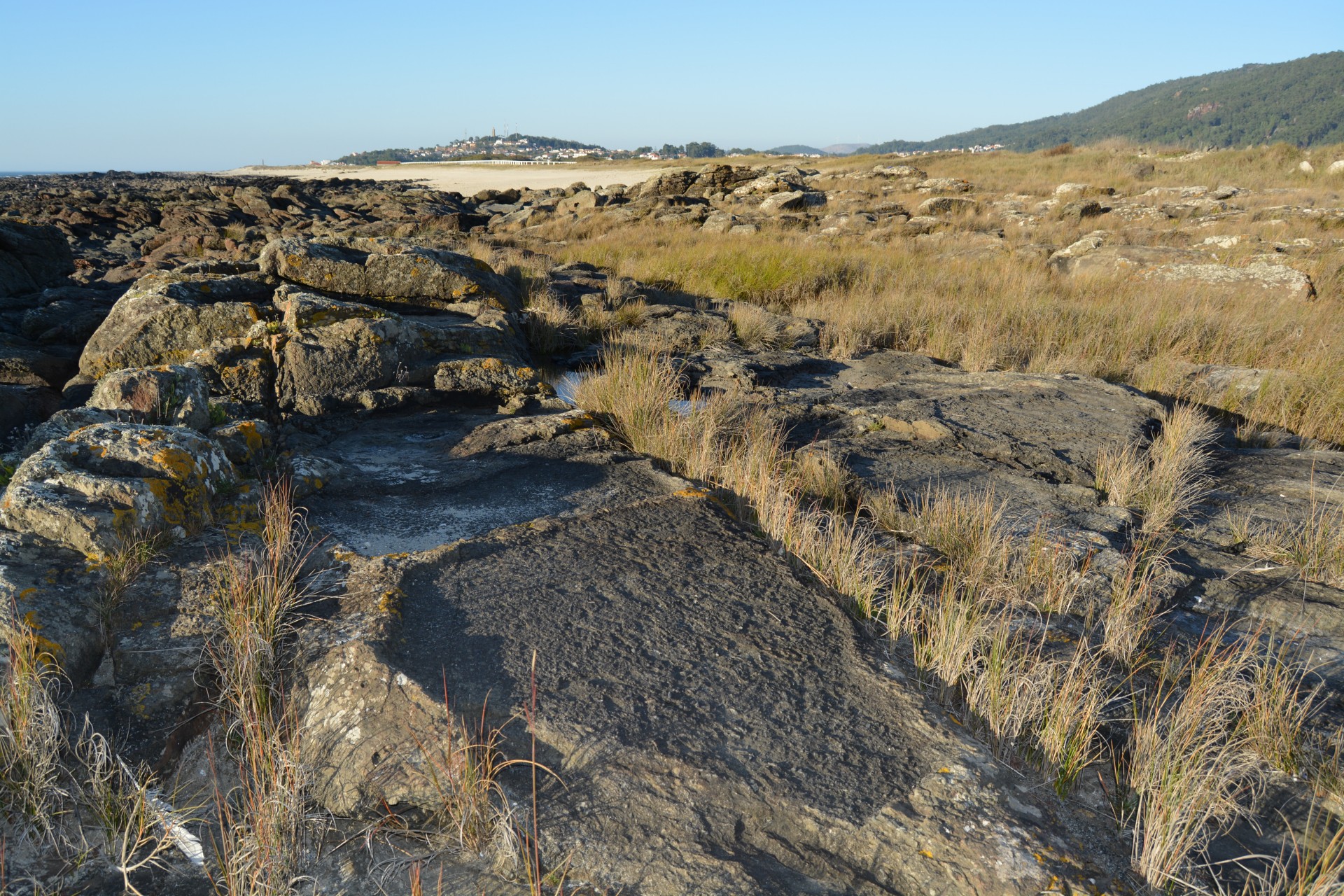Canto Marinho Geosite – Local National Monument
Points of interest
The salt pans of Canto Marinho
The salt pans found in Canto Marinho have an exceptional historical and archaeological value in relation to the production of salt during the Iron Age and the Romanization period of the northern coastal area of Portugal. The large number of pans or troughs found along a vast number of rocky outcrops, located on the southside of the beach, in a linear extension of almost 1000 metres, as well as the morphological diversity of the excavated structures make Canto Marinho into a truly unique site.
These pans or troughs would have been found above the high-tide mark, thus avoiding flooding when the tide was in. From this we understand that they worked with an indirect flooding system whereby the salt farmer would flood the pans with water brought in from the sea. Chronologically, studies on the theme suggest that this type of structure and technique for salt production was the most widely used method in pre-Roman times (Almeida, C., 2005). These salt pans have a variety of irregular shapes and forms, from sub-rectangular, trapezoidal or even semi-circular. Depth varies greatly but many are between 5 to 10 cm deep (Almeida, 2009 p. 145) and indicate that the main objective was to only contain a minimal quantity of water for rapid and easy evaporation. The basins were cut out on the rocks by pecking the stone, most certainly with the aid of an iron instrument, though specific marks are not evident as the rocks have been subjected to erosion.
Seven hundred salt pans have been identified but this number could be greater if we are to consider that many of these primitive structures may be unrecognisable or damaged due to the effects of factors such as the natural deposit of sediments and detritus, the strong erosion of the rocks exposed to the constant winds and wave action at high-tide as well as human intervention throughout time.
The geostrategic location of the Canto Marinho salt pans may be related to the proximity of Iron Age settlements. Less than 40 minutes away is the Corôa Castro and 30 minutes, the settlements of Montedor and Pêgo. Any which one of these hillfort settlements could certainly have a vested interest in using these salt pans.

